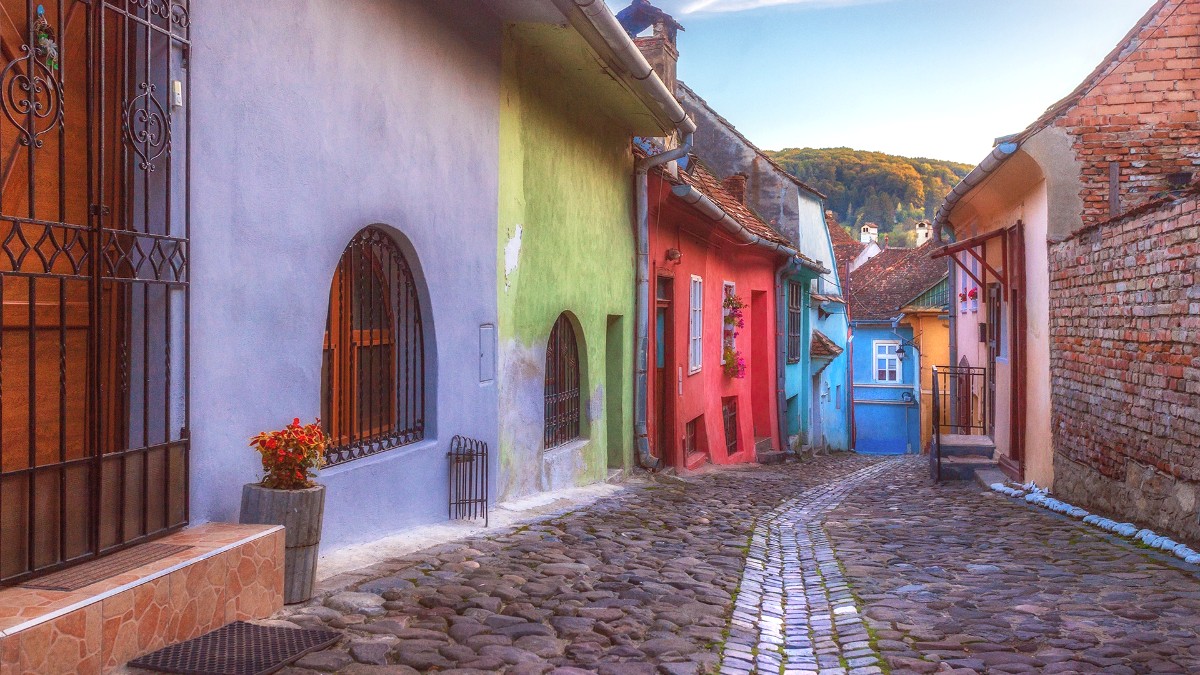
Transylvania, Romania
Pork, beef, and chicken are common in Romanian cooking. Vegetables often used include cabbage, potatoes, beans, corn, onions, and garlic, plus various root vegetables. Herbs like dill, parsley, thyme, and bay leaves are frequent, giving distinct smells.
Sour cream (smântână), often thick and rich, accompanies many dishes. Mămăligă (polenta) serves as a common side, and local cheeses are a part of the food. Flavors often lean toward savory and comforting.
Tipping is customary. A 10% tip is standard for good service. Consider 15% for excellent service. Rounding up the bill for smaller amounts is also common.
Table manners are similar to Western European styles. Use a knife and fork. Keep hands visible. Toasting with tuică (plum brandy) or wine is common; say "Noroc!" (Cheers!).
Portions are often generous. Feel free to ask for leftovers. Service may be slower, reflecting a relaxed dining pace. Enjoy the meal and conversation.
Hearty cabbage rolls, a national dish. Minced meat (often pork/beef mix) with rice, seasoned, rolled in pickled cabbage leaves. Slow-cooked for tender, flavorful parcels. Served with sour cream and mămăligă (polenta).
Found in almost any traditional Romanian restaurant.
Grilled skinless sausages, a popular and iconic dish. Made from a mix of minced meats (beef, pork, sometimes lamb), spiced with garlic, thyme, and black pepper. Served hot, often with mustard and bread.
A favorite street food and staple in traditional eateries.
Soups are a fundamental part of Romanian cuisine; ciorbă means sour soups. The sourness comes from ingredients like fermented bran. Many kinds exist, like Ciorbă de burtă (tripe soup), Ciorbă de fasole cu afumătură (bean soup with smoked meat), Ciorbă de văcuță (beef soup), and Ciorbă de pui (chicken soup).
A wide array of comforting and nourishing soup options.
A must-try Romanian dessert. Fried or boiled doughnuts with soft cow's cheese in the dough. Served warm with sour cream and fruit jam (often blueberry or cherry). A delightful mix of sweet, sour, and creamy.
Cozonac: Sweet, traditional bread (like panettone), often with walnuts or poppy seeds, popular during holidays. Plăcintă: Various sweet or savory pastries, fillings include cheese, apples, or meat.
Sighisoara is a smaller, historic town; dedicated fine dining options are limited. Most restaurants prioritize traditional Romanian cooking in a mid-range or casual setting. For a truly high-end dining experience, consider larger cities like Bucharest or Cluj-Napoca.
These establishments offer a balance of quality, atmosphere, and value, often with traditional Romanian or Transylvanian cuisine.
For affordable and quick meals, especially in the Lower Town.
This local market in the Lower Town presents fresh produce, local cheeses, smoked meats, and regional specialties. It offers a direct view into local life and provides ingredients for cooking yourself.
A traditional agricultural market, not a modern food hall.
Some restaurants may have Italian dishes (pizza, pasta).
Other popular European fare might appear on menus.
Dedicated Asian, Indian, or Mexican restaurants are uncommon.
Traditional Romanian cuisine is the main focus.
Halal and kosher food choices are extremely limited, if present, in Sighisoara. The city does not have a large Muslim or Jewish population with dedicated food establishments.
Travelers with these dietary guidelines may need to self-cater, rely on vegetarian options, or carry their own certified foods.
Carry a Translation card to clearly state your dietary restrictions in Romanian. Many online sources offer such cards.
Formal cooking classes for visitors are uncommon in Sighisoara itself. Some guesthouses, especially in surrounding Saxon villages, may offer informal cooking shows or hands-on lessons if arranged ahead.
In wider Transylvania, visiting local farms or artisan food producers (cheese makers, brandy distilleries) is possible. Such visits typically need advance arrangement and private transport.
Dining inside the Citadel's historic buildings delivers an immersive atmosphere. Some restaurants sit in structures with centuries of history, like the alleged birthplace of Vlad the Impaler (Casa Vlad Dracul).
Eating in these settings truly transports you back in time.
Experience the true taste of Transylvania through locally sourced ingredients, showing the region's agricultural heritage.
Explore local wines, plum brandies (tuică/pălincă), and refreshing elderflower drinks (socată) for an authentic taste.
Visit local markets to discover handmade cheeses, smoked meats, and other specialties direct from regional producers.
Restaurants and food stalls generally maintain good hygiene standards. Use common travel sense regarding food and water consumption.